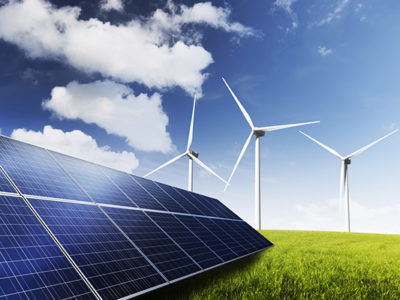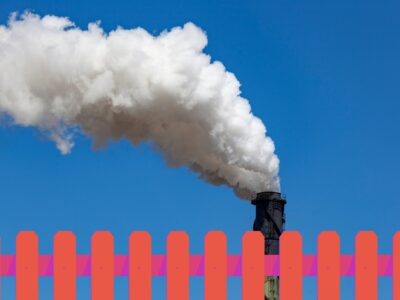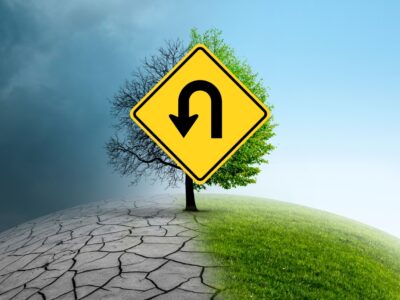What Are the Possible Outcomes in U.S. Supreme Court Greenhouse Gas Case?
Court likely to rule in favor of EPA
Next Monday, the U.S. Supreme Court will hear oral arguments in Utility Air Regulatory Group (UTAG) v. EPA. I’ve previously described what is at stake in the case here and here and, in the interest of full disclosure, helped author a brief in support of EPA’s position. The oral arguments might begin to reveal how the Court will rule on the case. My prediction, without the benefit of the oral argument, is that the Court will uphold EPA’s regulations, which interpret the Prevention of Significant Deterioration (PSD) provision of the Clean Air Act, by a 5-4 vote with the typical spilt between the liberal and conservative justices and Justice Anthony Kennedy providing the swing vote in favor of EPA.
My reasons are threefold. First, that’s the same vote and same split that occurred in Massachusetts v. EPA, the landmark ruling finding 1) that greenhouse gases are “pollutants” as defined by the Clean Air Act and 2) that EPA had to decide whether greenhouse gases endanger public health and welfare. So Justice Kennedy has already demonstrated his willingness to apply the Clean Air Act to greenhouse gases under the same act that is at issue in the UTAG case. Indeed both cases involve determining whether the word “pollutant” applies to greenhouse gases. Second, I think the case is a pretty straightforward case of statutory interpretation and the provision at issue in the case says that the provision applies to “each pollutant subject to regulation under this chapter.” Since greenhouse gases are pollutants (see Mass v. EPA) and are regulated under the chapter (as a result of Mass v. EPA) the statutory language seems pretty clear that EPA’s decision to apply the provision to greenhouse gases is not only allowable but required. That’s what the court of appeal below held and that’s what I think the Supreme Court will say. Again, for more explanation, see here. Third, EPA’s approach to regulating greenhouse gases under the PSD provision is a conservative one, beginning with very large sources of greenhouse gases and only later regulating smaller ones. EPA has developed very good explanations and analysis about how those later regulations might actually work to minimize the regulatory burden on small sources and to make EPA’s job easier. We described these explanations and analysis in our amicus brief. The explanations and analysis provide a strong basis for refuting the argument that applying the PSD provisions to greenhouse gases leads to absurd results. Instead, EPA’s approach is designed precisely to avoid absurd results. Given that the Court typically defers to reasonable agency interpretations of a statute and that EPA thinks it can avoid absurd results, I think the Court will uphold the PSD regulations.
But what if I’m wrong and the Court rules against EPA? How serious will the outcome be for EPA’s ability to regulate greenhouse gases going forward? There are several possibilities.
First, the Court could hold that the PSD provisions apply only to new sources that are already regulated under the PSD provisions because they emit conventional pollutants. Such a ruling would be quite narrow and still subject the vast majority of large emitters of greenhouse gases to PSD regulation. The American Chemistry Council made this argument in its petition for certiorari. Such a ruling would have very limited effect and largely free EPA to continue on it’s regulatory path, except that EPA would no longer need to craft regulations for smaller new sources of greenhouse gases.
Another possibility is that the Court could hold that the PSD provisions don’t apply to greenhouse gases because the structure and intent of the Clean Air Act suggest that the PSD provisions only cover pollutants regulated under the National Ambient Air Quality Standards provisions of the Act. This would mean that new, large sources of greenhouse gases would not need to get permits to operate nor would they need to install the best available control technology to control greenhouse gases. Such a ruling would be a blow to EPA but would by no means be fatal to the agency’s overall regulatory strategy to regulate greenhouse gases. Most importantly, such a ruling would not jeopardize EPA’s regulations applying other provisions of the Clean Air Act to greenhouse gases. These include the regulations for automobiles and trucks (those regulations were upheld by the lower court and the Supreme Court refused to review the ruling). The regulations also include what are known as New Source Performance Standards. EPA has issued proposed greenhouse gas rules for new electric generating units and is in the process of drafting rules for existing electric generating units. Those rules should not be affected by any ruling striking down the PSD provisions. I explained the New Source Performance Standards here.
Third, the Court could hold that the PSD provisions apply to greenhouse gas emissions as the plain language of the statute makes clear but that EPA’s regulations implementing the provisions are impermissible because they should have extended their regulations immediately to all sources covered by the PSD definition of “major source.” Such a ruling would, of course, be ironic: petitioners are trying to strike the application of the PSD provisions to greenhouse gas emissions for all sources based on an argument that EPA couldn’t start with regulating big sources and then phase in the regulation of smaller sources. Instead, they could end up with a ruling that extends the application of greenhouse gases to all sources. This scenario is pretty unlikely because the Court of Appeals decision never reached this question: instead, the Court of Appeals held that the petitioners — industry groups and some states — lacked standing to challenge the substance of the rule. So a more likely scenario, as I explained here, is that the Court could find that the petitioners in fact have standing and send the tailoring rule back to the Court of Appeals to have it decide whether EPA’s regulations are reasonable.
One thing that seems virtually impossible in the case is a ruling that wipes out EPA’s ability to regulate greenhouse gases at all. The Court refused to hear the industry challenge to EPA’s finding that greenhouse gases endanger public health and welfare, a finding the Court of Appeal upheld. Had the Court agreed to hear that portion of the case then it could have cast serious doubt on any of EPA’s regulations. Its failure to grant certiorari on the broader endangerment finding means that any ruling it issues is highly likely to be limited only to the PSD provisions of the Clean Air Act, not to other regulatory efforts.








Reader Comments